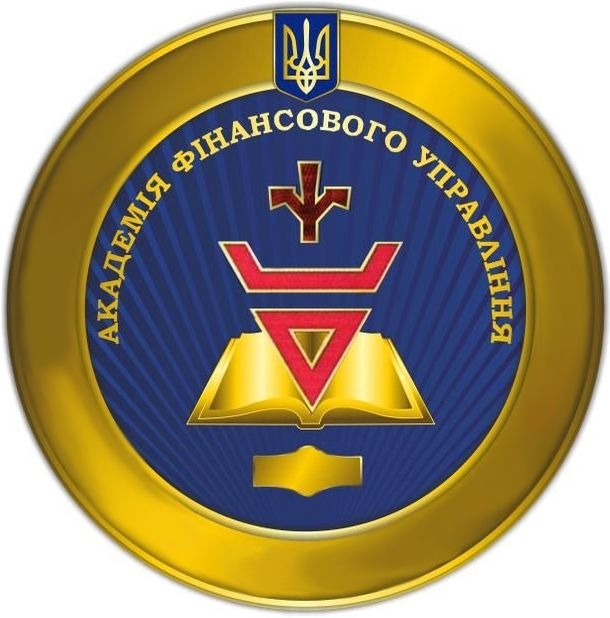
|
№ 4/2020
2. Frølich, N., Kalpazidou Schmidt, E., & Rosa, M. (2010). Funding systems for higher education and their impacts on institutional strategies and academia: A comparative perspective. International Journal of Educational Management, 24 (1), 7–21. DOI: 10.1108/09513541011013015. 3. Johnstone, D. B., Arora, A., & Experton, W. (1998). The financing and management of higher education: a status report on worldwide reforms. Washington, DC: World Bank. 4. Powell, W. W., & Snellman, K. (2004). The knowledge economy. Annual Social Review, 30, 199–220. DOI: 10.1146/annurev.soc.29.010202.100037. 5. Hlib, P., Zatonatska, T., & Liutyi, I. (2019). Utilization of Information Technologies in Higher Education. 2019 IEEE International Conference on Advanced Trends in Information Theory (ATIT), 349–354. DOI: 10.1109/ATIT49449.2019.9030449. 6. Gupta, H., & Singhal, N. (2017). Framework for embedding sustainability in business schools: a review. Vision: The Journal of Business Perspective, 21 (2), 195–203. DOI: 10.1080/21568235.2015.1044545. 7. Lebeau, Y., & Cochrane, A. (2015). Rethinking the ’third mission’: UK universities and regional engagement in challenging times. European Journal of Higher Education, 5 (3), 250–263. DOI: 10.1080/21568235.2015.1044545. 8. Findler, F., Schönherr, N., Lozano, R., Reider, D., & Martinuzzi, A. (2019). The impacts of higher education institutions on sustainable development. International Journal of Sustainability in Higher Education, 20 (1). DOI: 10.1108/IJSHE-07-2017-0114. 9. European Commission (2010). Europe 2020 - A European strategy for smart, sustainable and inclusive growth. Retrieved from ec.europa.eu/eu2020/pdf/COMPLET%20EN%20BARROSO%20%20%20007%20-%20Europe%202020%20-%20EN%20version.pdf. 10. European Commission (2017). Communication on a renewed EU agenda for higher education, Communication from the Commission to European Parliament. Retrieved from eur-lex.europa.eu/legal-content/EN/TXT/?uri=CELEX%3A52017DC0247. 11. Parker, L. D. (2012). From privatised to hybrid-corporatised higher education: A global financial management discourse. Financial Accountability & Management, 28 (3), 247–268. DOI: 10.1111/j.1468-0408.2012.00544.x. 12. Altbach, P. G., & Knight, J. (2007). The internationalization of higher education: Motivations and realities. Journal of Studies in International Education, 11 (3), 290–305. DOI: 10.1177/1028315307303542. 13. Krucken, G., Castor, C., Kosmutzky, A., & Torka, M. (Eds.) (2006). Towards a Multiversity? Universities Between Global Trends and National Traditions, 7–16. Bielefeld. DOI: 10.14361/9783839404683-001. 14. Terzieva, B., & Unger, M. (2019). Erasmus Mundus Joint Master Graduate Impact Survey 2018 (Research Report). Vienna: Institute for Advanced Studies. 15. Suspitsin, D. (2007). Between the state and the market: sources of sponsorship and legitimacy in Russian non-state higher education. Private Higher Education in Post-Communist Europe, 157–178. Springer. DOI: 10.1057/9780230604391_8. 16. Seeber, M., Cattaneo, M., Huisman, J., & Paleari, S. (2016). Why do higher education institutions internationalize? An investigation of the multilevel determinants of internationalization rationales. Higher Education, 72, 685–702. DOI: 10.1007/s10734-015-9971-x. 17. Knight, J. (2014). Is internationalisation of higher education having an identity crisis? The forefront of international higher education: A festschrift in honour of Philip G. Altbach, 75–87. Dordrecht: Springer Science & Business Media. 18. Luijten-Lub, A. (2007). Choices in internationalisation. How higher education institutions respond to internationalisation, Europeanisation, and globalization. Enschede: CHEPS. 19. Hudson, R. (2015). Dominated by economics? Evidence of changing drivers of internationalization and its funding within higher education institutions in Europe. Higher Education Policy, 29 (1). DOI: 10.1057/hep.2015.4. 20. De Wit, H. (2014). The different faces and phases of internationalisation of higher education. The forefront of international higher education: A festschrift in honour of Philip G. Altbach, 89–99. Dordrecht: Springer Science & Businss Media. DOI: 10.1007/978-94-007-7085-0_6. 21. Buckner, E., & Stein, S. (2020). What Counts as Internationalization? Deconstructing the Internationalization Imperative. Journal of Studies in International Education, 24 (2), 151–166. DOI: 10.1177/1028315319829878. 22. The State Treasury Service of Ukraine. (2020). Retrieved from www.treasury.gov.ua/ua/file-storage/2020-11. 23. Parker, L. D. (2012). From privatized to hybrid-corporatized higher education: A global financial management discourse. Financial Accountability & Management, 28 (3), 247–268. DOI: 10.1111/j.1468-0408.2012.00544.x. 24. European Commission (2020). Erasmus+ Key Figures. Retrieved from ec.europa.eu/programmes/erasmus-plus/about/key-figures_en. 25. European Commission (2020). Erasmus+ Programme Guide. Retrieved from ec.europa.eu/programmes/erasmusplus/sites/erasmusplus2/files/erasmus_programme_ gui de_2020_v3_en.pdf. 26. Liutyi, I., Beliavskaiya, O., & Polianovskyi, H. (2020). Financial autonomy of universities: historical overview and international experience. Scientific notes of Ostrog Academia National University, Economics, 18 (46), 68–78. DOI: 10.25264/2311-5149-2020-18(46)-68-78 [in Ukrainian]. 27. OECD. (2020). Education at a Glance 2020: OECD Indicators. Paris: OECD Publishing. Retrieved from www.oecd.org/education/education-at-a-glance/. 28. Kwiek, M., & Maassen, P. (2012). National higher education reforms in a European context: Comparative reflections on Poland and Norway. Frankfurt: New York: Peter Lang. DOI: 10.3726/978-3-653-02379-4. 29. Stortingsmelding. (2000–2001). Gjør din plikt - Krev din rett (Kvalitetsreform av høyere utdanning. Tilrådning fra Utdannings - og forskningsdepartementet av 9. mars godkjent i statsråd samme dag. St. meld. nr. 27) [in Norwegian]. 30. OECD. (2005). OECD Thematic review of tertiary education. Country background report for Norway. Paris: The Norwegian Ministry of Education and Research: OECD Publishing. 31. EACEA. (2020). National Policies Platform. Retrieved from eacea.ec.europa.eu/national‑policies/eurydice/content/higher‑education‑funding‑54_en#:~:text= Norwegian%20students%20are%20entitled%20to,study%20at%20least%20half%20time. 32. MoER. (2019). Information on the state budget of 2019 for universities and university colleges. Goals for universities and university colleges, budget and changes in funding and financing system. Retrieved from www.regjeringen.no/en/dep/kd/id586/. 33. Nord University. (2020). Norwegian-Ukrainian cooperation in Public Sector Economy Education: Accounting, Budgeting and Finance (NUPSEE). Retrieved from www.nord.no/no/om‑oss/fakulteter‑og‑avdelinger/handlshogskolen/Sider/nupsee.aspx#&acd=fd83ab63‑ec3c‑8068‑3cde‑4968d8f2a975. 34. Nord University. (2020). Norwegian-Ukrainian cooperation in a field of Public sector accounting, budgeting and finance Research Education (NUPRE). Retrieved from www.nord.no/no/om‑oss/fakulteter‑og‑avdelinger/handelshogskolen/Sider/Nupre.aspx. 35. Nord University, & Taras Shevchenko National University of Kyiv. (2020). Guidelines for joint academic supervision and collaboration on the education of PhD candidates. Retrieved from www.nord.no/no/om‑oss/fakulteter‑og‑avdelinger/handelshogs kolen/Documents/Guidelines_joint_supervision_22.10.pdf. 36. EACEA. (2020). Survey Report Erasmus Mundus Programme Implementation in the Context of COVID-19. Retrieved from eacea.ec.europa.eu/sites/eacea‑site/files/brochure_surveyreporterasmusmundusprogrammecovid19_03.pdf. 37. Taylor, J. (2004). Towards a strategy of internationalization: Lessons and practice from four universities. Journal of Studies in International Education, 8 (2), 149–171. DOI: 10.1177/1028315303260827. 38. Iefymenko, T., Gasanov, S., & Bohdan, I. (2018). Public budget expenditures for higher education: structural changes and he problem of formular distribution. Bulletin of Kyiv National University of Technology and Design “Economic Sciences Series”, materials of the VIII International scientific-practical conference (October 5, 2018, Kyiv), 27–51 [in Ukrainian]. |
|
|
|
|
THE ACADEMY OF FINANCIAL MANAGEMENT |

|
|
|



